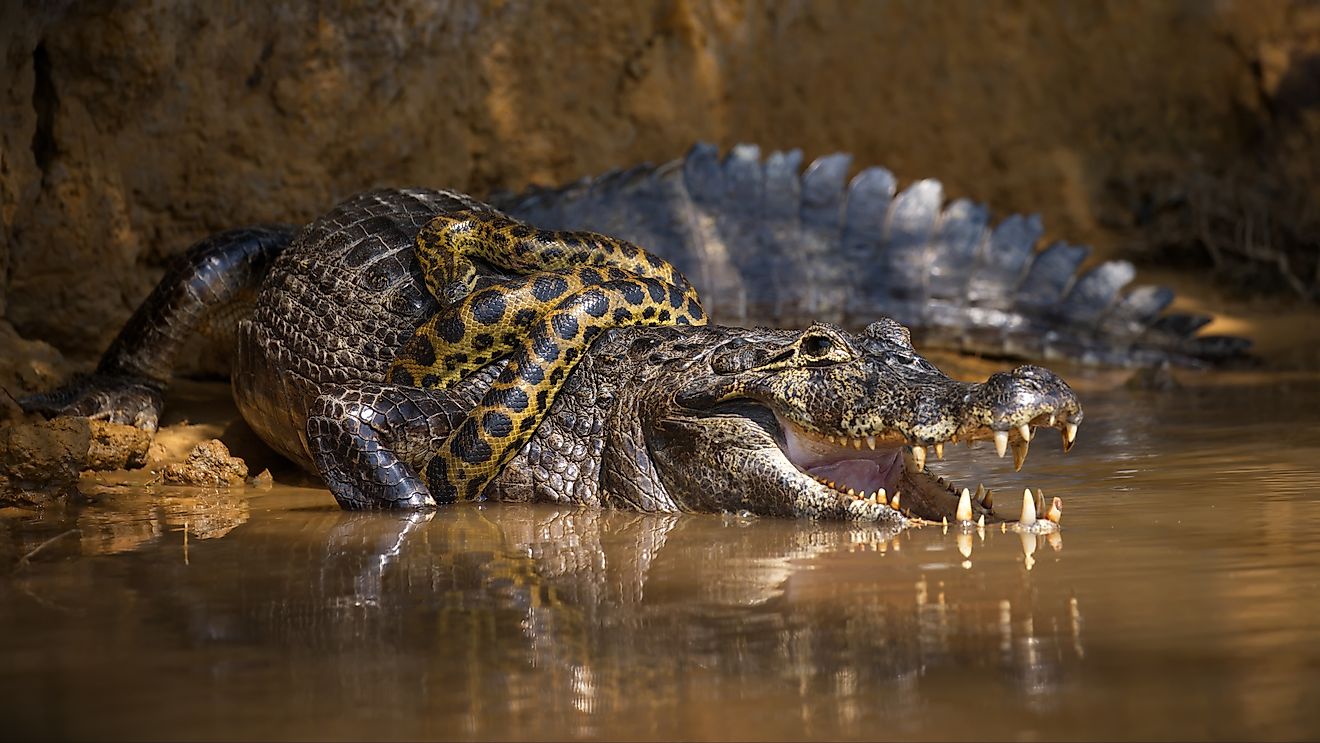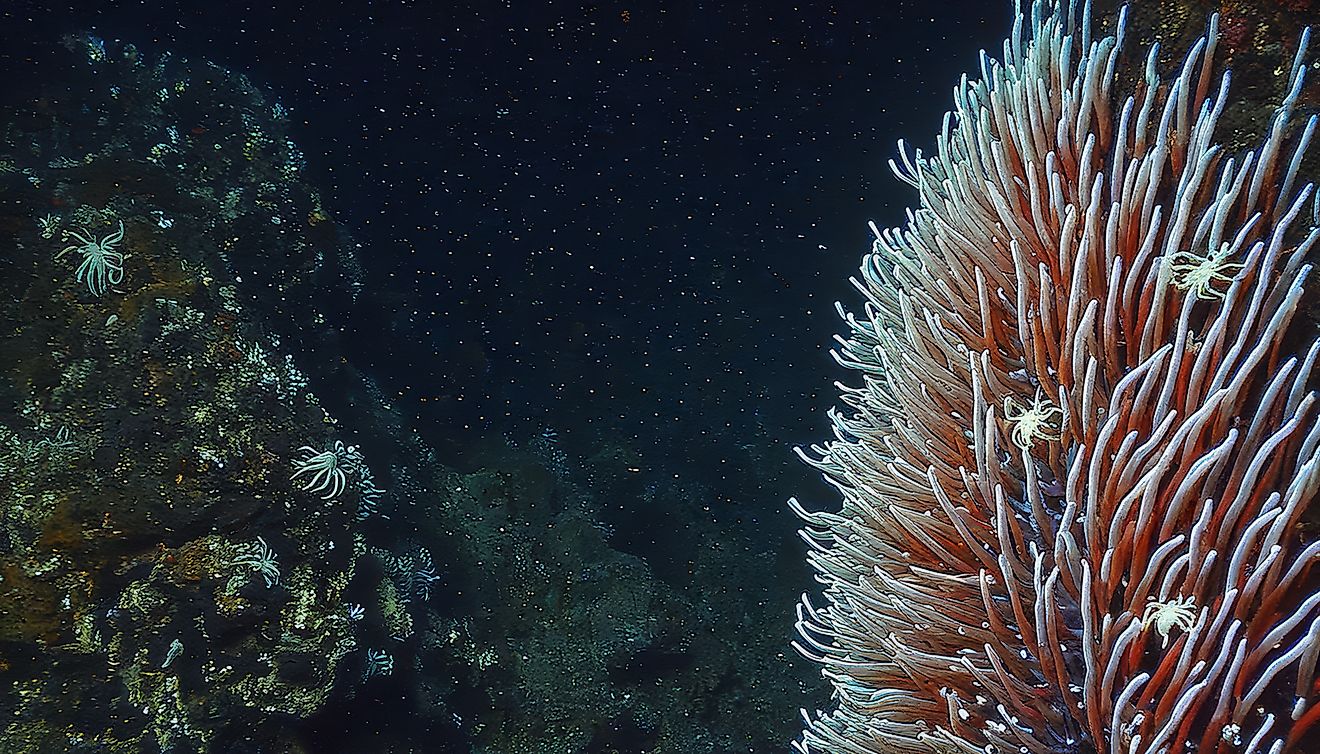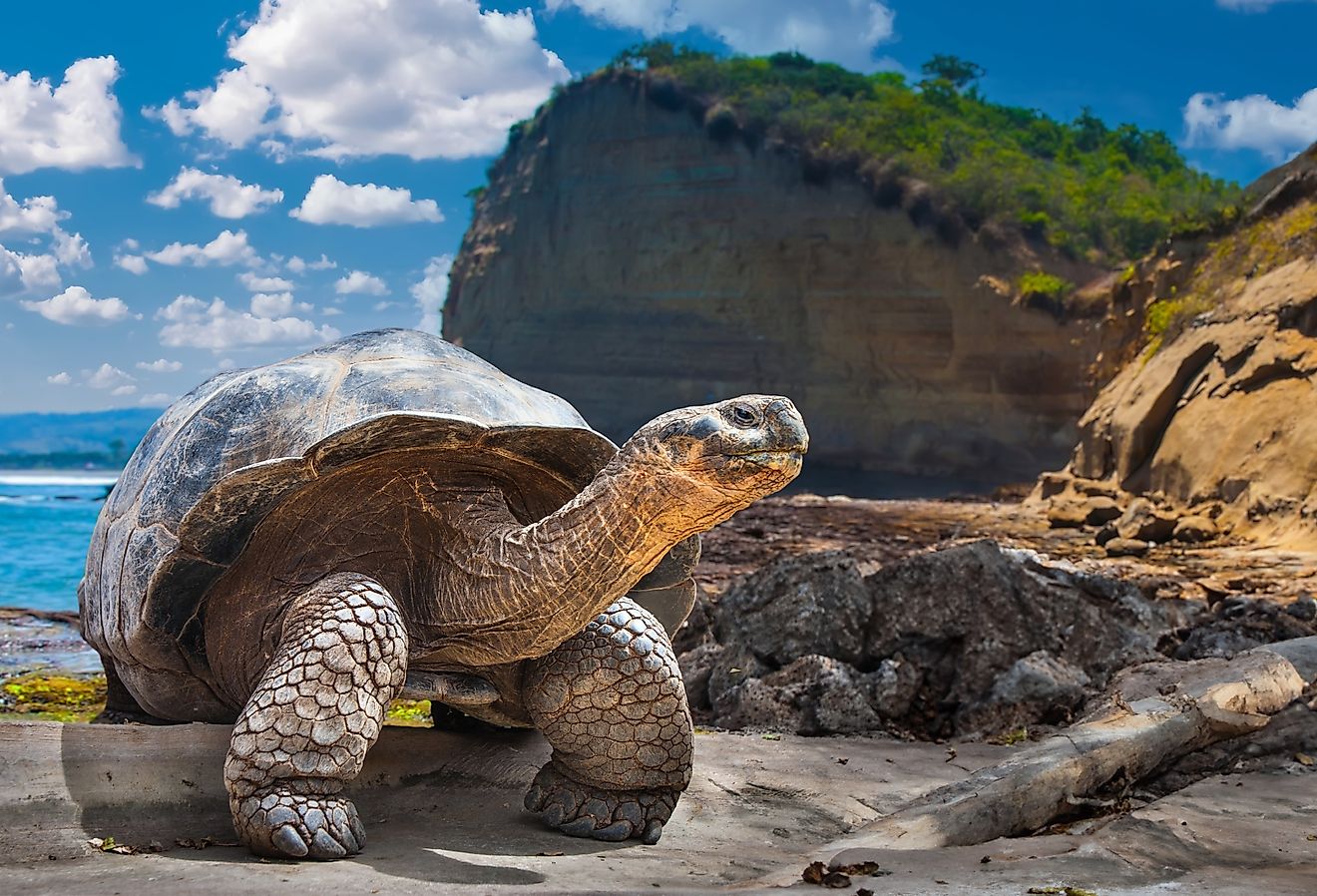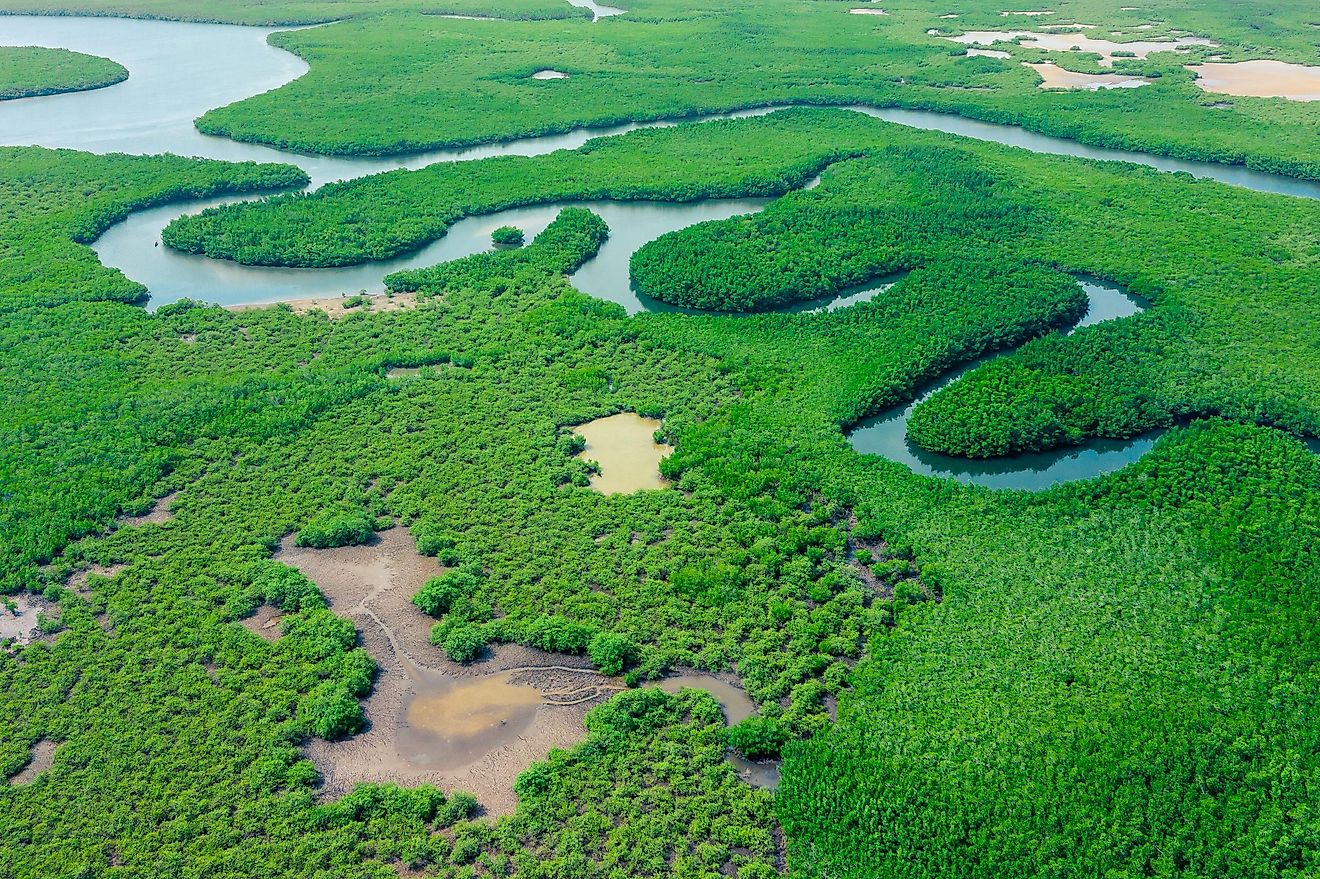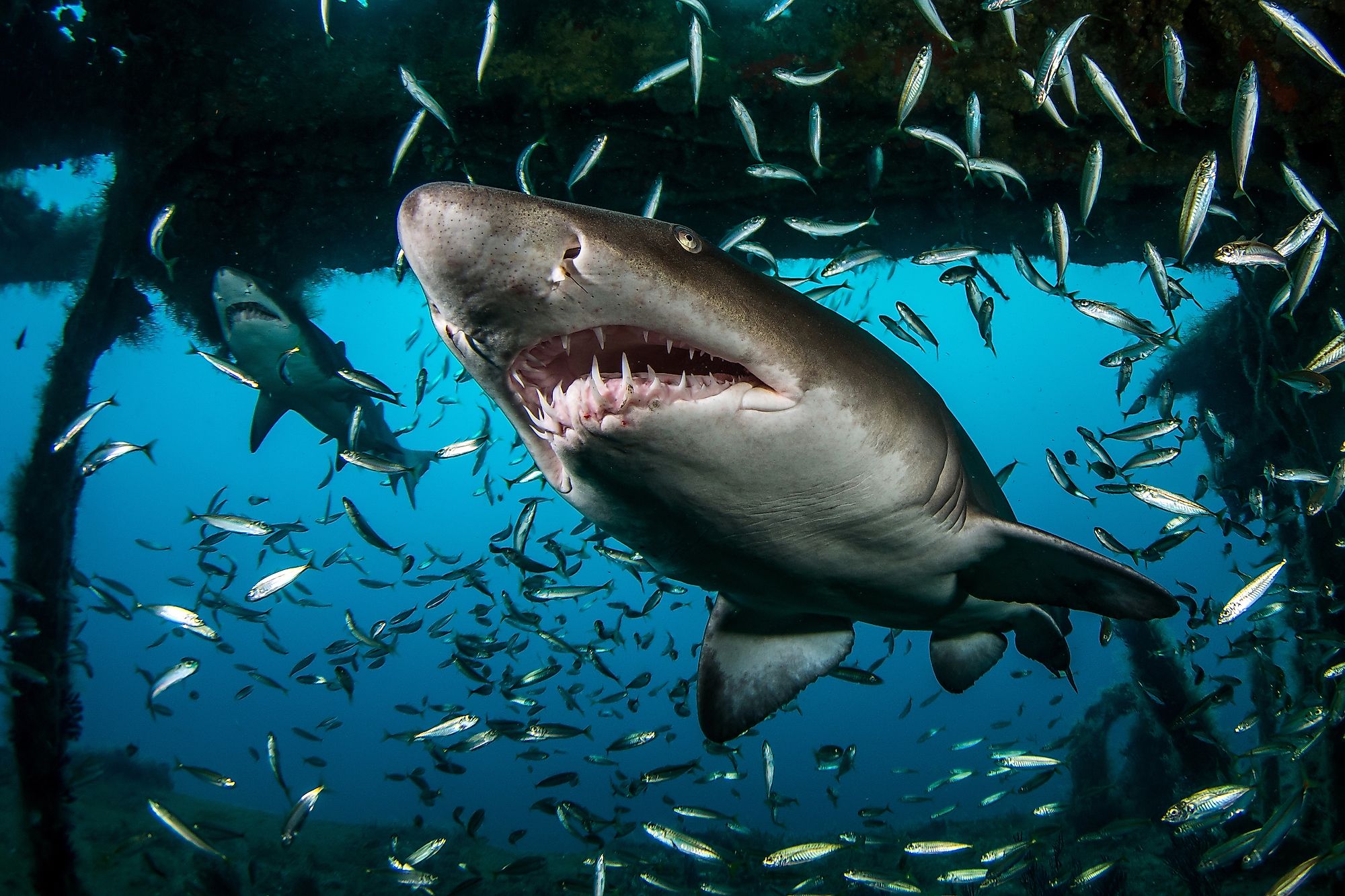
11 Animals that Live in the Ocean
Scientists have mapped a mere ten percent of the ocean, and as such, they have no idea what lurks in the remaining depths. This fact also means that only around 240,000 marine species have been discovered so far, out of an estimated 1.6 million. The global ocean is divided into the Arctic, Pacific, Atlantic, Indian, and Southern Oceans. These waters are home to all kinds of marine animals, including the massive blue whale and the tiny pygmy seahorse.
It is generally accepted that the Pacific Ocean boasts the most sea life because it is the largest of all the major oceans. The Pacific also hosts the most coral reefs. However, the remaining oceans hold their fair share of stunning marine life. The list below details just some of the most amazing animals in the ocean.
Ragged Tooth Shark
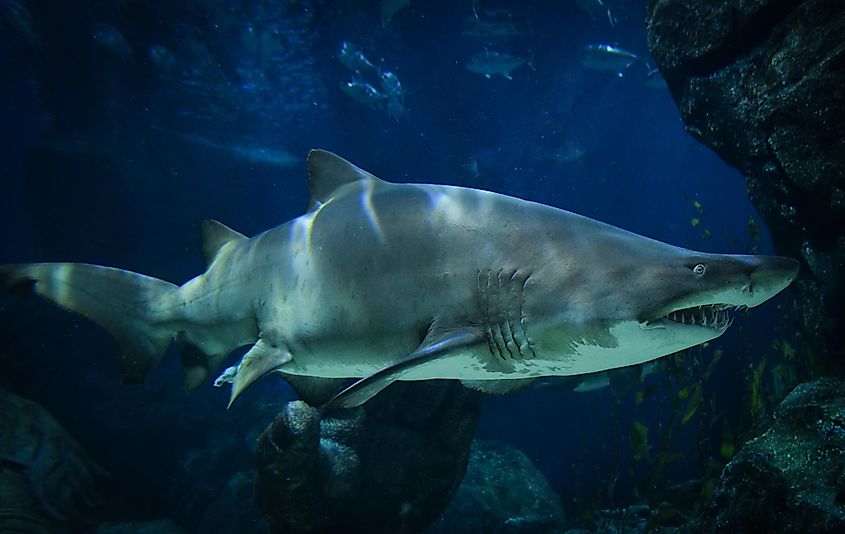
The ragged tooth shark has an intimidating look because they are closely related to great white sharks. These sharks are usually found in shallow water, where they surface to take gulps of air as they migrate along the South African coast. They also live in the warm waters of the Pacific and Indian Oceans.
Despite how dangerous they look, ragged-tooth sharks don’t usually pose a threat to humans. When a rare attack happens, it is likely because the shark mistook a human for a sea creature or was frightened.
They’re named for their scary-looking teeth, which are extremely sharp and set in three rows in both the upper and lower jaws. Ragged tooth sharks lose up to 3 teeth per day which are replaced quickly. They rest on the ocean floor during the day - hunting at night - and feed on lobsters, crabs, squids, and other smaller sharks.
Harp Seal
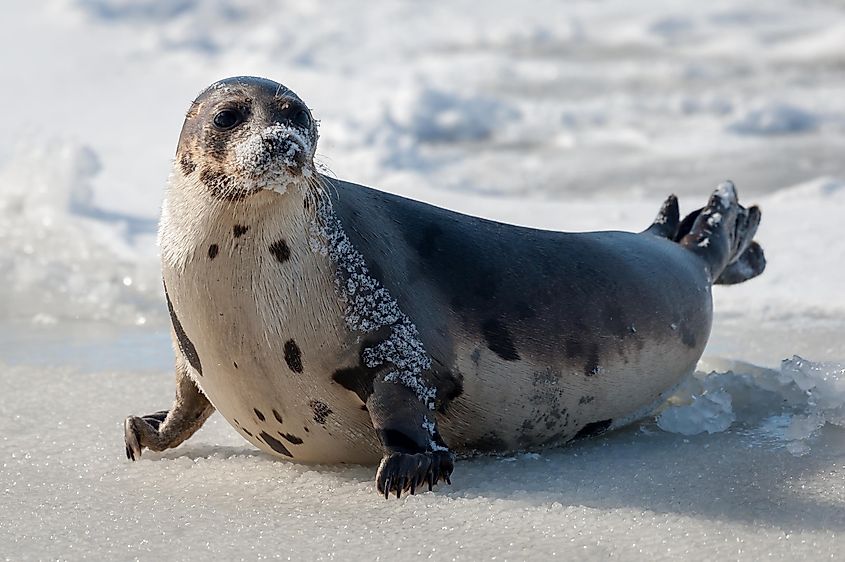
Harp seals are cute mammals with bright white fur that inhabit the frigid waters of the Arctic and North Atlantic Oceans. Also known as Saddleback seals, these marine creatures are named for the saddle or harp-shaped marks visible on their backs.
Harp seals migrate over vast distances, with some traveling more than 3,000 miles to other feeding grounds. While they’re usually found in the Scandinavian regions and all the way to Canada, harp seals have been spotted as far away as North Carolina in the US.
They are excellent swimmers and carnivores who feed on several species of fish. A thick layer of blubber protects them from the cold, and their babies are born on ice floes. In recent times, there’s been an uptick in harp seal hunting, but fortunately, the species is not considered to be endangered.
Dugong
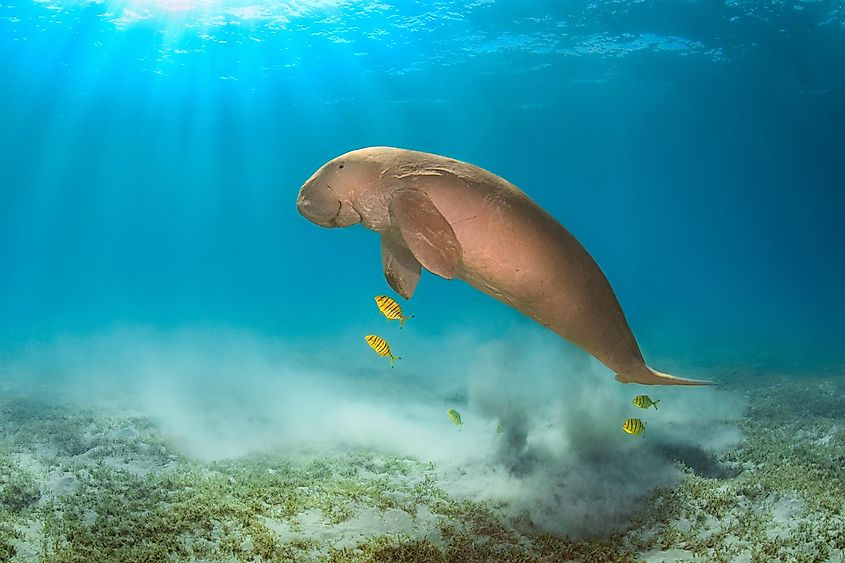
The docile dugong is the ocean’s only herbivorous mammal. They are typically found in the Pacific and Indian oceans, with the largest population inhabiting the waters off the Australian coast. Dugongs eat sea grass, and their closest land relative is the elephant. This fact was discovered by scientists when they observed dugongs growing tusks as they mature.
Their tusks also indicate their age - the number of rings on the tusks shows how old they are. The oldest dugong lived to be around 73 years old. It was recently discovered that dugongs have ancient ancestors that lived in the waters that flowed over what is modern-day Egypt more than 40 million years ago.
Dugongs are susceptible to becoming prey to crocodiles, orcas, and sharks, especially when they’re young. Despite this, there’s a perpetual ‘smile’ on their faces as they swim around in pairs. These beautiful creatures are believed to be the inspiration behind mermaid legends, but sadly their numbers have declined by 90% over the last 30 years. The species is currently listed as vulnerable.
Jellyfish
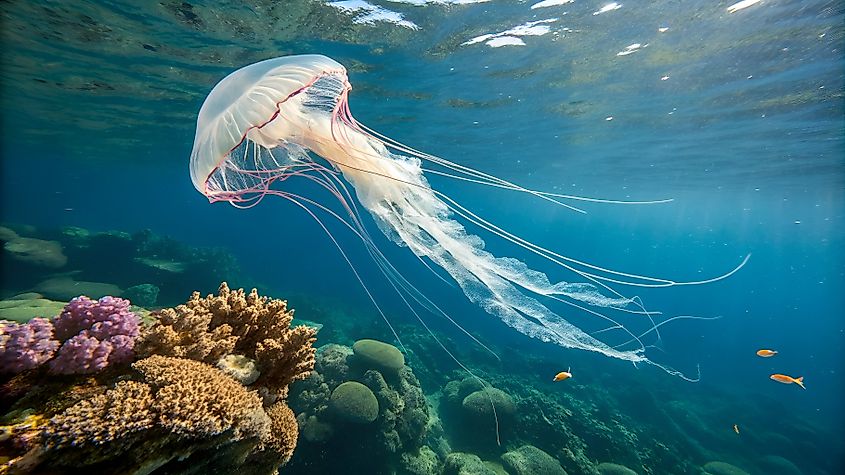
Jellyfish have a reputation for being immortal. They are part of the Cnidaria phylum, which includes more than 10,000 species. This abundance means jellyfish are found in every ocean on Earth. Scientists believe these ancient creatures have been around longer than dinosaurs because they’re highly adaptable to climate change. Even though they have ‘fish’ in their name, they’re actually zooplankton that consists of 98% water. This reason is why they evaporate when they wash ashore.
The most dangerous jellyfish in the world is the box jellyfish. If a human is stung by a box jellyfish, they will likely die within a few minutes. The smallest jellyfish is the Irukandji box jellyfish, and the largest is the lion’s mane jellyfish with tentacles growing up to 120 feet long.
Emperor Penguin
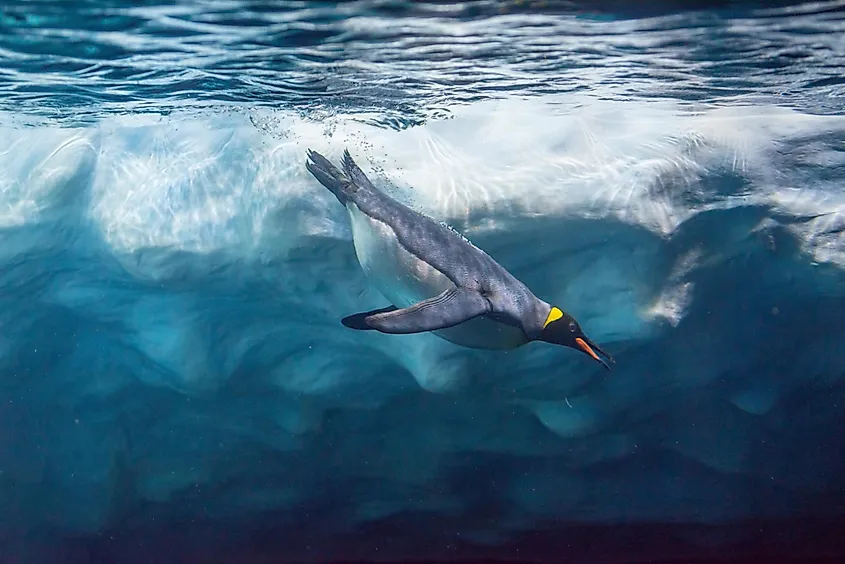
The majestic emperor penguin is the largest of all the penguin species, and they’re found exclusively in the icy region of Antarctica. Emperor penguins eat squid, fish, and krill, but they’re also at risk of being eaten by orcas, fulmars, and leopard seals. Much like the beloved polar bear, climate change is threatening to wipe emperor penguins from the planet, and they’re currently classified as near threatened.
Emperor penguins can dive deeper than any other bird, reaching nearly 2,000 feet below the ocean surface and staying submerged for almost half an hour. They live in colonies of thousands that are so big they can be seen from space. These penguins live on ice attached to the land, and they’re the only species that breed during winter in the Antarctic. As shown in the movie Happy Feet, emperor penguins dance and sing to attract mates during the breeding season.
Bottlenose Dolphin
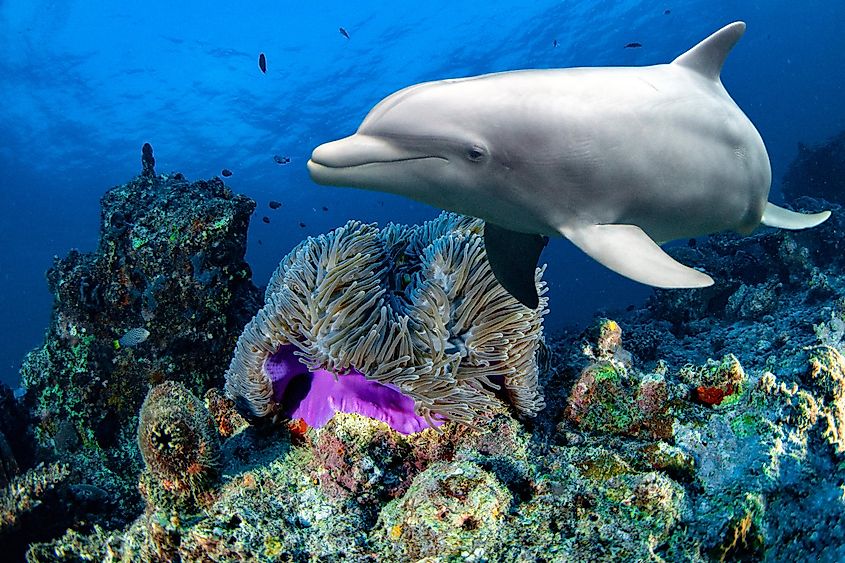
Bottlenose dolphins are found in mild waters where they travel in groups of up to 15. They are highly socialized creatures that look for food together and help raise each other’s calves. These magnificent marine mammals are often spotted from land or boats, as they glide through the water at speeds of 30 km an hour. Like whales, they are known to breach and usually whistle or squeak at each other to communicate.
Dolphins are one of the smartest species in the world. They have no known predators but are a massive target for human hunters. Their global population number is not threatened yet, but if hunting continues unabated, the bottlenose dolphin might become endangered.
Octopus
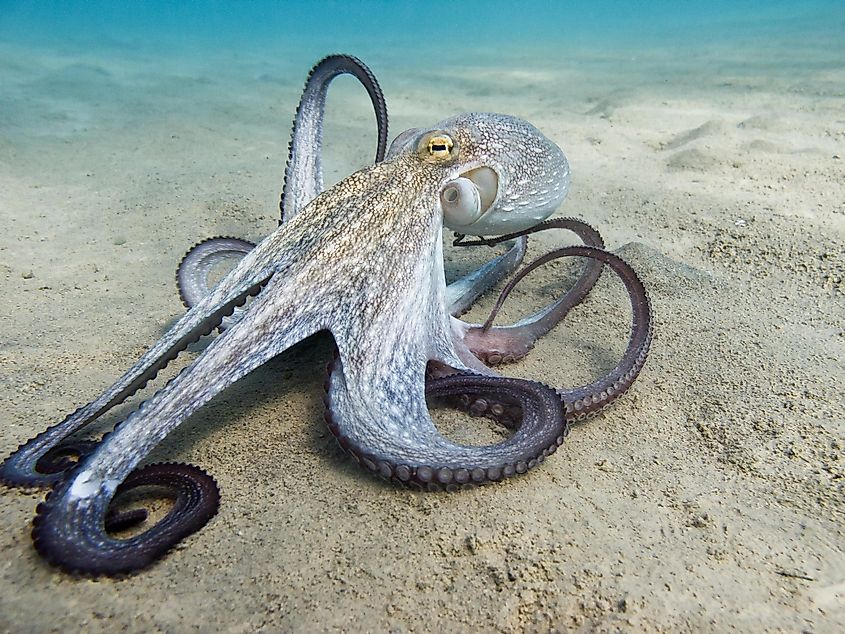
An octopus has eight arms and blue blood and is known as one of the most mysterious sea animals on Earth. When they lose an arm, they can regrow them in a short time. Octopuses have no skeletons, making it easy for them to hide in tiny crevices, but they have strong jaws and saliva containing poison. They each have three hearts - one heart pumps blood to the organs, while the other two pump blood through its gills: blue blood containing hemocyanin.
Like jellyfish, octopuses can be found in all oceans, coming out at night to hunt. They have a chameleon-like trait that allows them to change color and blend in with their surroundings. They eat fish, shrimp, small sharks, clams, and sometimes birds. In general, octopuses are not endangered, even though their lifespan isn’t usually longer than five years.
Sea Lion
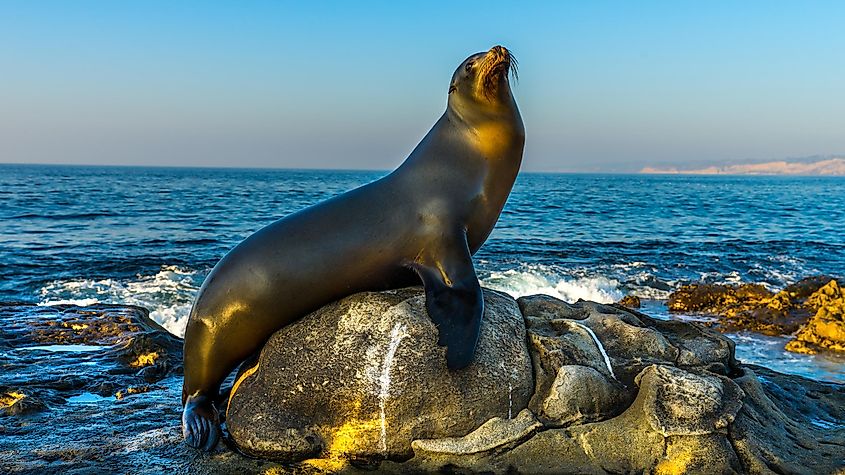
The sea lion is named for its roar, which is loud and sometimes aggressive. Sea lions are related to seals and walruses and are mainly found on the Galapagos Islands. They do, however, also inhabit the waters of the Japanese and Korean coastlines, the western regions of the US, and even Mexico.
There used to be seven subspecies of sea lions, but the Japanese sea lion became extinct more than 50 years ago. The remaining six species consist of carnivores that eat octopus, squid, rockfish, clams, and more. Like most mammals, sea lions are susceptible to a host of diseases that usually cause death - including cancer, brain problems, and arthritis.
Sea lions can live for a long time, with some reaching 20 years. However, most only live a couple of years before falling prey to human hunters or killer whales. Climate change and overhunting threaten the livelihood of sea lions, particularly the New Zealand and Steller sea lions. International protection laws have been implemented to help protect these amazing sea creatures from extinction.
Great White Shark
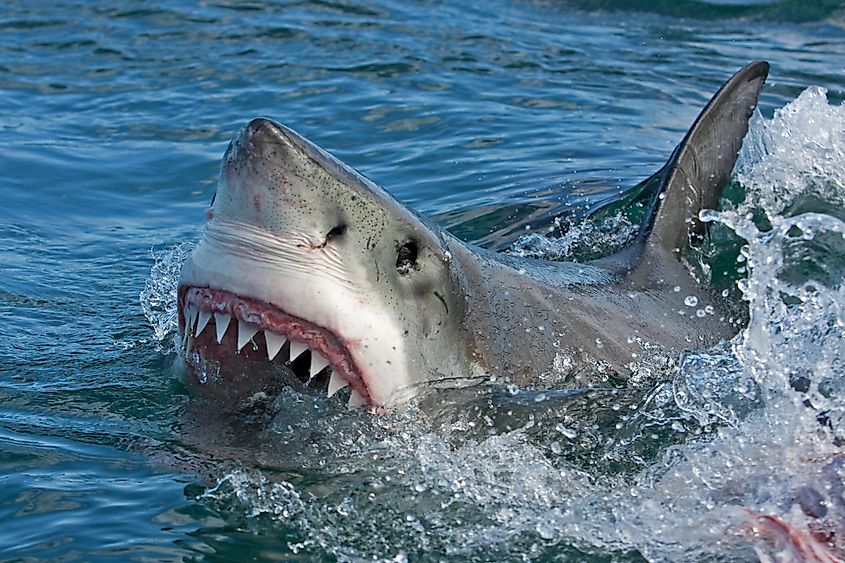
The great white shark is unfairly depicted as being aggressive and dangerous. The truth is that great whites try to avoid conflict and don’t choose to prey on or attack humans. Like many other marine species, great white sharks existed before the dinosaurs, and in modern times, they live up to around 70 years. They can grow very big, with the largest great white ever filmed reaching a length of 20 feet.
Great white sharks are clever and must be left to explore their natural surroundings. They don’t do well in captivity and will die when left in a tank or aquarium. When they feed, they often eat entire sea creatures, such as seals, and then can go without feedings for a long time, sometimes several months.
They have around 300 teeth that are replaced often, and their colors allow them to blend in with their surroundings. Their eyes glow in the dark, and when they breach they leap up to 10 feet into the air. These sharks are found in significant numbers in coastal South Africa, California, and Australia, and they migrate between Mexico and Hawaii every year. Their natural predator is the orca, which often hunts great whites with the express purpose of removing their livers. Great white sharks are listed as vulnerable because of overfishing.
Orca
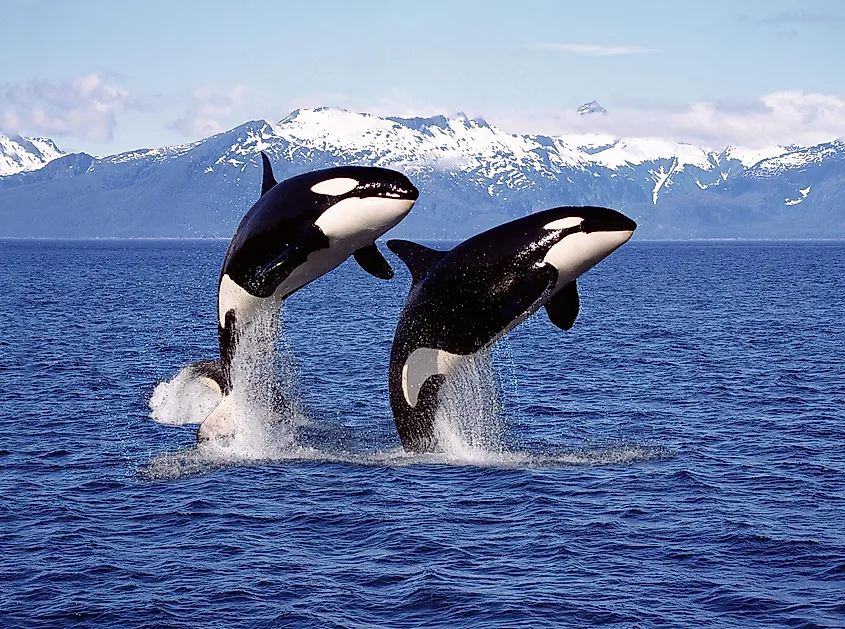
The orca, or killer whale, is not a whale but an oceanic dolphin. They are found in every ocean and can live as long as 80 years. Orcas are highly recognizable due to their striking black-and-white coloring, and they’ve been known to teach each other different ways of hunting.
Like humans, orcas speak different ‘languages,’ using different noises to communicate in varied situations. They are apex predators, attacking and feeding on stingrays, seals, whales, sharks, and other marine mammals. Also, in the same way as human females, it has been discovered that orca females experience menopause.
They never fully sleep, and when they come to rest, they do so with one eye open. This behavior is mainly because they must remain conscious to repeatedly surface to take a breath. Southern Resident Orcas are endangered and are at risk of extinction.
Blue Whale
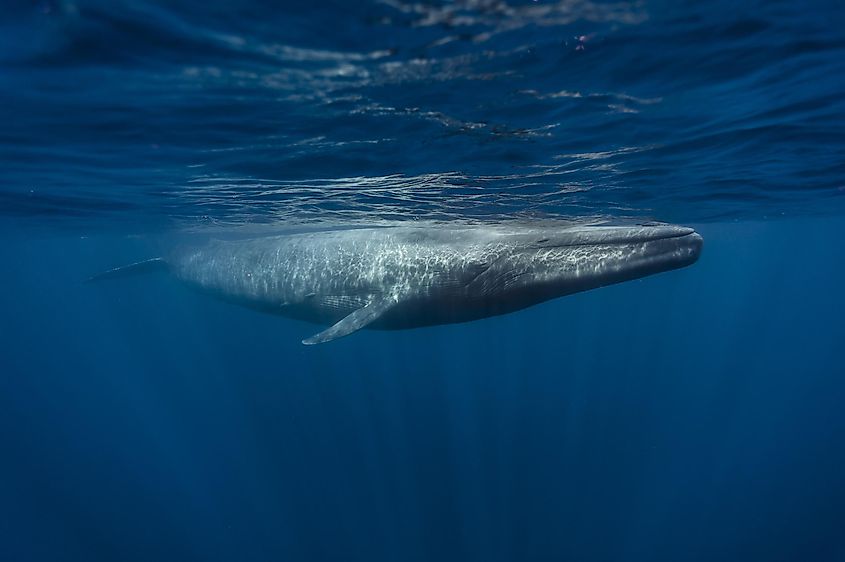
Blue whales are the largest animals on Earth. They’ve been around for 1.5 million years, and ancient blue whale fossils prove that they’ve always been the biggest living thing on the planet.
Blue whales can grow to a length of 100 feet and weigh up to 220 tons. A blue whale’s heart is the size of a small car, while its tongue can weigh as much as an elephant’s. They are known to emit sounds that are louder than the roar of a jet engine and can be heard up to 1,000 miles away.
These gentle giants eat tons of krill daily and can live up to 100 years old in modern times. They nearly became extinct and would have died out if not for a protection law that was signed in 1966. Blue whale populations are slowly increasing, but their status remains endangered.
Thus, the ocean is filled with fascinating animals like those mentioned above and with more species discovered every year. However, the future of all these animals is at stake because of threats like climate change and pollution. It is important to protect and preserve the ocean ecosystems as life on oceans greatly impacts life on land, including us. Securing the future of marine life thus helps ensure a happy future for all of us.
